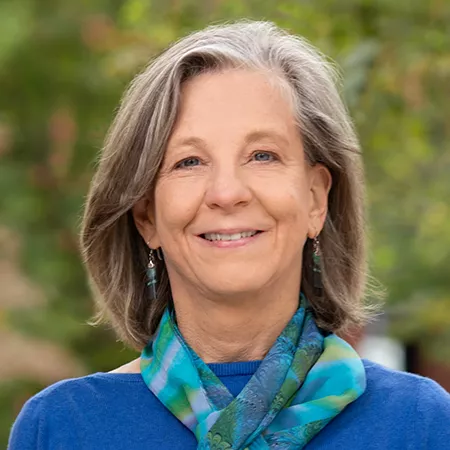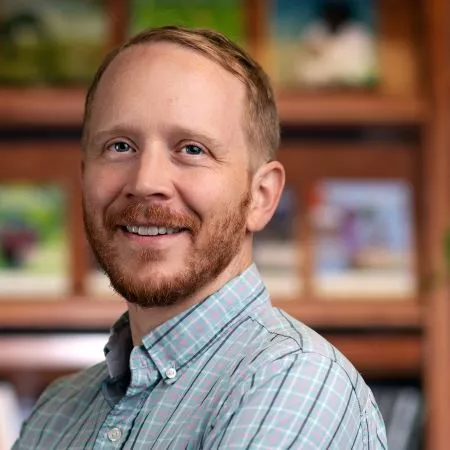This brief tutorial introduces networks as simpler depictions of the structures of complex systems—explaining their characteristics, as well as how researchers can use them as representations of socio-environmental systems in different ways.
The video begins by discussing the motivation for using network analysis, some basic terms and concepts, and the origins of networks. It also explains networks’ representation, a few measures used to understand network structure, and some examples of the use of networks by socio-environmental researchers. It concludes by reviewing the steps involved in their use.
-
About the Presenters
Margaret A. Palmer
DirectorDr. Margaret A. Palmer is Director of SESYNC and a Distinguished University Professor at the University of Maryland, College Park. With a background in hydrology and ecology, Margaret contributes to testing and extending fundamental theory and empirical findings on aquatic ecosystem dynamics. She has worked extensively on the relationship between biodiversity and ecosystem processes, the biogeochemistry of streams and wetlands, and organism dispersal in aquatic ecosystems. She is an international expert on the restoration of streams and rivers and co-author of the book Foundations of...
Margaret A. Palmer
DirectorDr. Margaret A. Palmer is Director of SESYNC and a Distinguished University Professor at the University of Maryland, College Park. With a background in hydrology and ecology, Margaret contributes to testing and extending fundamental theory and empirical findings on aquatic ecosystem dynamics. She has worked extensively on the relationship between biodiversity and ecosystem processes, the biogeochemistry of streams and wetlands, and organism dispersal in aquatic ecosystems. She is an international expert on the restoration of streams and rivers and co-author of the book Foundations of Restoration Ecology. Margaret is also known for her work at the interface of water science and policy, having served as a technical advisor and innovator to help build solution-focused teams that solve problems with social, legal, policy and scientific aspects. She is extensively published (Google Scholar), has numerous awards, and remains actively engaged in science matters associated with national and local water policies and actions—particularly those associated with the Appalachians.
External Links:
https://scholar.google.com/citations?user=2nGk3QQAAAAJ&hl=enJaime Ashander
Visiting Scholar in ResidenceDr. Jaime Ashander is a Research Ecologist with the U.S. Geological Survey. Prior to that role, he was a Postdoctoral Fellow at Resources for the Future in Washington, D.C., and then a Research Associate with SESYNC, where he participated in multiple synthesis team projects. He also worked closely with SESYNC Director Margaret Palmer in designing the socio-environmental modeling tutorial series—three of which he developed himself. Jamie’s research as a computational scientist has focused on understanding the consequences of complex biological dynamics in changing and human-influenced...
Jaime Ashander
Visiting Scholar in ResidenceDr. Jaime Ashander is a Research Ecologist with the U.S. Geological Survey. Prior to that role, he was a Postdoctoral Fellow at Resources for the Future in Washington, D.C., and then a Research Associate with SESYNC, where he participated in multiple synthesis team projects. He also worked closely with SESYNC Director Margaret Palmer in designing the socio-environmental modeling tutorial series—three of which he developed himself. Jamie’s research as a computational scientist has focused on understanding the consequences of complex biological dynamics in changing and human-influenced environments. Using mathematical and computational models, he advances theory and methods for describing how social, ecological, and evolutionary dynamics interact in human-dominated environments, as well as methods to connect this theory to data. With these tools, he seeks to understand fundamental questions about the dynamics of both natural and human-dominated systems. He also seeks to apply this knowledge to pressing global challenges in sustainability, including outbreaks and invasions of harmful species, conservation of endangered species, and management of freshwater, coupled human-natural systems. He has worked on methods to inform demographic models from genomic data; theory for how environmental stochasticity affects population persistence given eco-evolutionary dynamics; and models for the effects of coastal salmonid aquaculture on ecological and evolutionary dynamics of sea lice and wild salmon.
External Links:
https://scholar.google.com/citations?user=TsBxHjcAAAAJ&hl=en
https://www.ashander.info/

